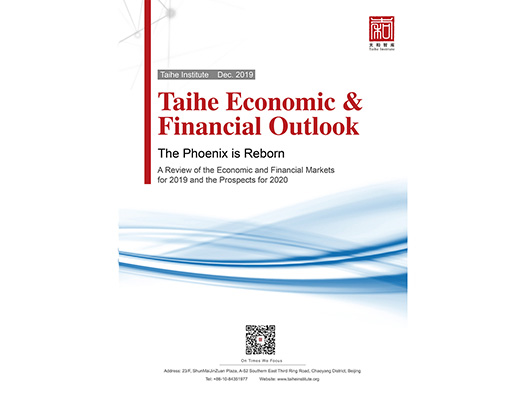A Review of the Economic and Financial Markets for 2019 and the Prospects for 2020
Ten Important Predictions
1. In 2020, China will enter the most arduous year of the "eight-year economic transition".
2. In the initial phase of supply-side structural reform, raw materials’ contracting volumes and rising prices will be significantly curbed during 2020, while re-expansion after capacity-concentration will face the new challenge of overcapacity, with dividends from supply-side structural reform rapidly disappearing in the state-owned sector.
3. State-owned enterprises are crucial to the sustainability of the Chinese economy, while private enterprises determine its overall quality.
4. The U.S. is attempting to transfer its internal economic problems, so China should prepare for an "extended conflict” over trade.
5. The market liberalization of interest rates will accelerate in 2020, as will "administrative monetary easing".
6. The tendency for China-U.S. financial markets to fragment will become greater.
7. The year of 2020 will witness the maturity of the yield curve and the emerging stratification pattern in investor preferences. There will be limited room for downward trend of treasury bond yields. The differentiation between credit bonds will become more apparent, and the venture-capital investment will have a more positive value.
8. China's stock market has long-term investment value. In 2020, index will have more investment value than individual stocks.
9. "Faith in Gold" will boost the gold market in 2020.
10. The crude oil market is unlikely to rise significantly in 2020.
Abstract
In 2019, global economic growth was sluggish, and central banks in the world's major economies responded by easing policies. Against this background, China's economy has encountered certain internal difficulties, and faced a sharply deteriorating external environment. 2019 was a difficult year for the Chinese economy. Reflecting on the year gone by and looking forward to the future, this report reviews 2019 in terms of the economy, the currency and financial markets, and makes predictions on the trends in 2020.
China's economy suffered obvious pain in 2019. Under the heavy blows dealt by the external environment, the strength of China’s real economy, constrained by both debt and systemic weaknesses, was clearly insufficient, and the GDP growth rate has been decreasing quarter by quarter. Looking forward to 2020, China's economy will soon enter the most arduous period of the "eight-year economic transition". The leverage ratio of society as a whole remains high, but the efficiency of using the leverage is very low, and private companies are struggling to survive. At the same time, reduced external demand brought about by the U.S. economic slowdown, global financial market risks, and the possibility of worsening economic and trade frictions will exacerbate China's economic conditions. Taihe Institute thinks that the recipe for growth in the Chinese economy lies in the reform of its "software". Only by further deepening reform, such as by accelerating the reform of systems and mechanisms, upgrading from the traditional high-growth model to an innovative and efficient high-quality model, developing the legal system and focusing on the simultaneous development of ethics and systems, can we truly improve the conditions for the economic growth and create a fair environment for private-sector companies and state-owned enterprises. This would restore vigor to China’s economy, and overcome the present difficulties.
In terms of monetary policy, in 2019 the central bank adhered to the principle of "focusing on the internal environment", and maintained a prudent monetary policy. At the same time, it moderated the flexibility to hedge the downward pressure on the economy with marginal easing. However, due to the poor transmission mechanism of monetary policy and the failure to resolve the internal structural problems of the economy, financial data were relatively weak in 2019, and interest rate sensitivity in the corporate sector was dulled. At the Central Economic Working Conference held in December of 2019, the prudent monetary policy set for 2018 was adjusted from “moderately tight” to “flexible and moderate”. Taihe Institute forecasts that in 2020 interest rate liberalization reform will be accelerated, and the central bank will make a modest interest rate cut in line with economic growth.
In terms of financial markets, the average interest rate has been declining for the year of 2019, but there was limited room for further decline. After the Baoshang Bank incident, credit in the inter-bank market contracted significantly, and the differentiation of credit products intensified. It is expected that the decline in interest rates in 2020 will remain limited, credit product differentiation will continue, and the fixed income market will develop further. On the stock market side, 2019 witnessed significant fluctuations in A-share market sentiment, and multiple delistings reminded investors about the risks of stock market investment. In 2020, the stock market will have positive investment value, and investment in index will be a better strategy than investing in individual stocks. Looking at commodities prices, Taihe Institute thinks that the "faith in gold" will return and its value will be gradually recognized, while the crude oil market will suffer from insufficient demand growth, with little chance of seeing major price rises.
ON TIMES WE FOCUS.
Should you have any questions, please contact us at public@taiheglobal.org
